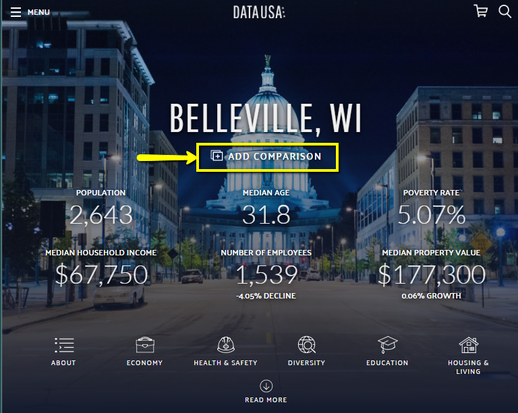|
Want to understand the industries, occupations, poverty, education, cost of living, and more in your community? Want to go further and see how you compare to other communities, the state, or the nation? Want to know how your community has changed over time? If so, here are a few resources to help make the analysis easier: DataUSA: https://datausa.io/
Combines multiple public U.S. Government data sources into one visualization tool. The data sources are cited so you can check for more current data or actually get the underlying data so you can generate your own charts. Don’t miss the ADD COMPARISON option which allows you to compare to another community. Read about more resources like Applied Population Lab and American FactFinder at the original post... Tackling the "Homework Gap" with the National AfterSchool Association (from Google for Education)1/16/2018
Teachers are assigning more and more homework that requires the Internet, but millions of students—especially those from low-income and rural communities—don’t have Internet access at home. That’s why Google is partnering with the National AfterSchool Association (NAA) to fund programs working to close this “homework gap.” Google’s $500,000 grant will fund research and resource development for programs supporting millions of students in underserved communities. Read more here.
Over the years, most of our libraries have experienced a disconnect between Sierra and the receipt printer. The tell-tale sign is when Sierra will not print or wants to print to another printer in your library. Lately, I have been contacted with this issue more than ever before. It seems to happen most often on Windows 10 computers and I am suspecting the Windows Updates to be the culprit. However, this can also happen on our Windows 7 computers.
There are a number of places in Sierra that the settings need to be checked/changed; though, they are all pretty much set the same. You may want to try this yourself because, once you do it a couple times, it will be faster than contacting me to do it. Of course, I would be happy to assist if you prefer. The procedure is here in the OWLSnet Manual. Everyone should already have the username and password to get in. If not, please ask your supervisor or contact me over the phone. Note that your printer name may be different than in the procedure (i.e. Visitor Cards printer). Hurry, you have just a few more days to ensure a spot for your tweets in the collections of the Library of Congress.
After archiving every single public message posted on Twitter since the social media platform was introduced in March 2006, the institution will soon scale back its approach to collecting them. Starting on Jan. 1, 2018, the library will apply the same selective discretion to tweets that it uses for other documents, collecting and archiving material around themes or events of consequence. The move, announced in a Tuesday blog post, brings to an end an ambitious effort, which began in 2010 when Twitter donated its full archive of public tweets to the library. “The Twitter Archive may prove to be one of this generation’s most significant legacies,” the library said in a document detailing the decision. “Future generations will learn much about this rich period in our history, the information flows, and social and political forces that help define the current generation.” Twitter has come a long way since one of its founders, Jack Dorsey, posted the first tweet on March 21, 2006. Today, many organizations, celebrities and politicians, including President Trump, view it as a crucial tool for reaching their audiences. The service has also shrunk the distance between the anonymous and the famous, the frivolous and the serious. The most-liked tweet of 2017 was a quotation about unity posted by former President Obama in the wake of the white supremacist violence this summer in Charlottesville, Va. And the most retweeted message was a plea from a teenager on a quest for a year’s worth of free chicken nuggets. Make of that what you will. (Read the entire article here: https://www.nytimes.com/2017/12/27/technology/library-congress-tweets.html?rref=collection%2Ftimestopic%2FLibraries%20and%20Librarians&action=click&contentCollection=timestopics®ion=stream&module=stream_unit&version=latest&contentPlacement=4&pgtype=collection) |
AuthorJohn's collection of tech tips, trends, and training for NFLS librarians Click to set custom HTML
Archives
December 2018
|
|


 RSS Feed
RSS Feed
